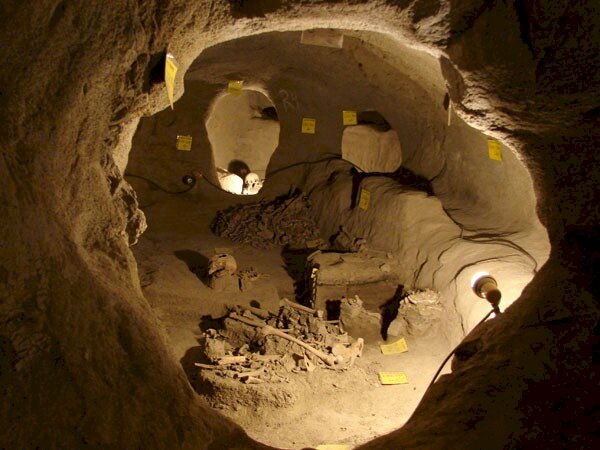

TEHRAN – Samen underground city is getting prepared to reopen to the public in west-central Iran. The ancient troglodytic settlement dates back to the Parthian era (247 BC – 224 CE) based on archaeological evidence.
Currently, an entrance, which bears Parthian architectural motives and elements, is being constructed next to the underground city, which is located in Hamedan province, CHTN quoted provincial tourism chief Ali Malmir as saying on Saturday.
Installation of lighting equipment, museum displays, and security devices are amongst other works being carried out in the underground town, the official noted.
He expressed hope that the restoration of the ancient site to be completed by the month of Shahrivar (starting August 23), the report said.
Samen subterranean settlement has 25 rock-carved rooms, interlinked tunnels, and corridors, the official noted.
The subterranean complex appears to have been first used for religious purposes, then as a cemetery, and finally as a shelter during emergencies.
The underground complex, located 400 km west of Tehran, is believed to be built sometime between the fall of the Achaemenid Empire (550-330 BC) and the early Parthian era (247 BC-224 CE).
Excavations at the site began in 2005 and are still going on. So far tens of well-preserved skeletons have been retrieved from its interconnected chambers.
Iran is a haven for ancient troglodytic architecture which is somewhat forgotten though they are filled with life and creativity. The northwest Kandovan village is one of the most famous examples of troglodytic architecture in the country; its ice-cream cone-shaped homes are resembling that of Turkey’s Cappadocia.
In October 2018, the country hosted the 3rd International Troglodytic Architecture Conference in which tens of experts, researchers, and academia discussed troglodyte-associated architecture, culture, and technology.
Known in classical times as Ecbatana, Hamedan was one of the ancient world’s greatest cities. Pitifully little remains from antiquity, but significant parts of the city center are given over to excavations. Ecbatana was the capital of Media and subsequently a summer residence of the Achaemenian kings who ruled Persia from 553 to 330 BC.
Hamadan has had many names: it was possibly the Bit Daiukki of the Assyrians, Hangmatana, or Agbatana, to the Medes, and Ecbatana to the Greeks. One of the Median capitals, under Cyrus II (the Great; died 529 BC) and later Achaemenian rulers, it was the site of a royal summer palace.
About 1220 Hamedan was destroyed by the Mongols. In 1386 it was sacked by Timur (Tamerlane), a Turkic conqueror, and the inhabitants massacred. It was partly restored in the 17th century and subsequently changed hands often between Iranian ruling houses and the Ottomans.
Sitting on a high plain, Hamedan is graciously cool in August but snow prone and freezing from December to March. In summer the air is often hazy. Ali Sadr cave, Ganjnameh inscriptions, Avicenna Mausoleum, Hegmataneh hill, Alaviyan dome, Jameh mosque, and St. Stephanos Gregorian Church are amongst Hamedan’s attractions to name a few.
AFM
 RSS Feed
RSS Feed















 May 30th, 2021
May 30th, 2021  Awake Goy
Awake Goy  Posted in
Posted in  Tags:
Tags: 













